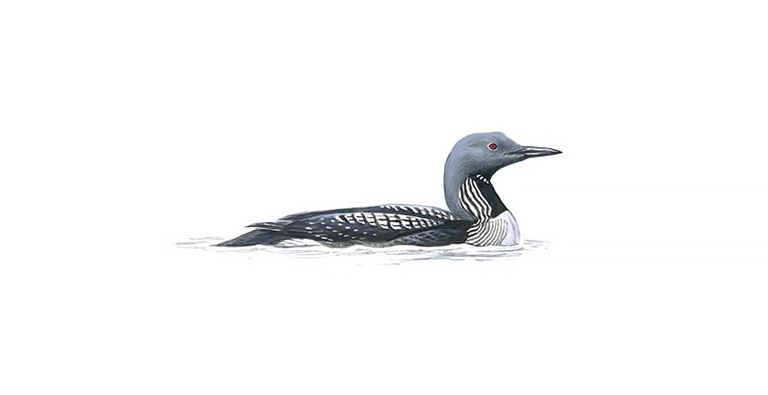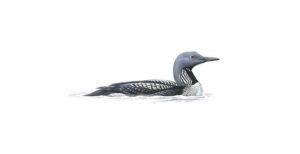Black Throated Divers on Loch Maree
Loch Maree is a gem for the canoeist. It is also a good place to spot rare Black Throated Divers. The black-throated diver looks smart in its summer plumage, with a black throat, silky grey head and neck, and a black-and-white-chequered back. In the winter, it turns a very dark grey above and white below, with an obvious white patch on its rear flanks. It has a straight, dagger-like bill. These streamlined diving birds sit low in the water and dive with consummate ease. On land they are clumsy, barely able to walk with their legs so far back on their bodies. They are easily disturbed when breeding and their vulnerability to marine pollution make them a vulnerable as well as rare breeding species. They are listed as a Schedule 1 species on The Wildlife and Countryside Act.
Black-throated Divers are a protected species. The birds nest very close to the water and only lay one or two eggs. At the best of times this bird has a struggle to survive as its nest is prone to flooding and it is not immune to predators like the Pine martin which also inhabits these islands. The trouble is that when they are nesting they are not easy to spot and it is very easy to disturb them by accident.
On all our canoe trips in the summer there is a chance of seeing black throated divers, but we take advice from Scottish National Heritage about which parts of the loch should be avoided so we don’t disturb them. This also goes for otters, seals, and any other wildlife we hope to see on our trips; we wish to protect our local wildlife and therefore do what we can to not directly approach the animals and scare them anyway.
For details on our paddling trips please see our website.


Comments are closed